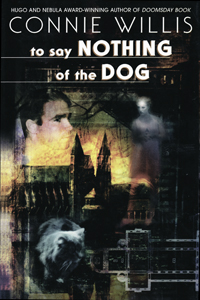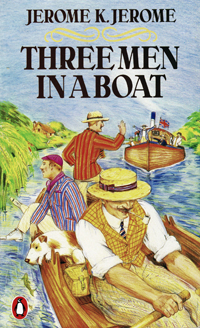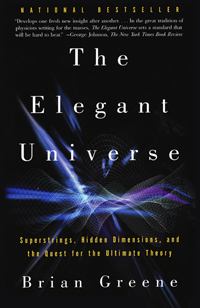The Old Armory in Bazinthiad was originally built as a lord’s keep in the days of Giralliya’s early history. Giralliya as an empire did not yet exist. Three kingdoms that would become its heart – Eirdry, Ennecy, and Istria – comprised the region, and Castellum Balazoron was a minor seat above Lake Argead, guarding the back way into the court of the Istrian king.
Blood Falchion
The lord’s heir, Caelan, was the second to see the blade.
It arrived amidst a pile of carpets from far Bethpaarean, and Sathon the carpet merchant’s son discovered it when he unpacked the bale and arranged the carpets in his father’s stall in the bailey.
Lord Jekis’ son sought his friend the instant he received word the carpet merchant was passing through Balazoron’s gates. It was a hike from his high chambers down through the donjon to the courtyard and out the barbican to the bailey, and Caelan suffered palsied limbs, the result of a fever in his infancy. He could not move fast, but he was just fast enough to see the sword—a falchion—a moment after Sathon uncovered it.
The weapon exuded an aura of dread. Caelan’s in-breath hissed. “What do you see?” he demanded.
Sathon turned in surprise—not that Caelan was there; the boys were always immediate in seeking one another—but in surprise at his friend’s tone: one of warning.
He answered: “The blade is broad and heavy after the nature of a falchion and fashioned of a bronze-hued metal that holds an edge far finer than ordinary metals. I should think it would split the bones of even a blood dragon, and a champion’s armor would part like water beneath its blow.”
Sathon nodded and continued. “Its hilts are fashioned of the same, but encrusted with opal and jade, and the scabbard matches them. The sap of the hevea tree covers the grip. The pommel is an emerald entire.” Sathon paused. “I wish I knew the way to wield a blade.” Envy and longing tinged his words.
“That’s not what I see.” Caelan swallowed. “I see shadow, a roiling darkness threaded by blood and despair.” His whisper strengthened to a command. “Hide it! Now! Or destroy it!”
That might have been the wiser course, but Caelan’s father came to greet the carpet merchant, the two men friends like their sons, and Lord Jekis saw what Sathon had seen: a fair weapon, rich, well-made, destined for the hand of a peer. And Jekis was a falchion wielder.
The foreign blade hung from the lord’s belt thereafter, and troubles followed.
A drought gripping the land deepened. Crops withered, wells failed, and wildfires swept through the dried grasses of the hunting veldt. Refugees pleaded entry at Balazoron’s gate every day, and the village on the lake shore below swelled as cousins and cousins of cousins left the parched interior to visit their kin.
Castellum Balazoron had foodstores in depth and an outer bailey made for mock battles. It could accommodate crowds. But the spring on the hillside faltered, its trickle slowing. The cistern in the inner bailey dried completely.
Lord Jekis ordered the digging of a new well, upslope from the outflow where the castellum churls filled their buckets. Legend held the heart of the aquifer supplying the spring rose there.
The men used a drill with a hollow bit, manually pumping its long stem, to excavate the well shaft. Deeper and deeper the bit penetrated, but the earth was dry, dry.
Lord Jekis and his sister quarreled. How many newcomers might be permitted through the gates? Should water be hauled from the lake? Could a request for aid be sent to Lord Vidriyo?
They quarreled about Caelan as well. Lady Agace had been as a mother to him since the fever. She looked always to ease her nephew’s shaking, cramping limbs. She summoned masseurs from Cambers, salves from Solmondy, and potions of healing from Hamrask, Fresange, and northern Tromme.
Now she evolved a scheme to send him to a sacred shrine in Capydaicia to pray healing of the goddess honored there. Lord Jekis denied her.
The words between brother and sister grew bitter, and their love for one another dwindled more swiftly than even the outflow of water from the hillside spring.
Caelan resisted his aunt’s plans for the first time, afraid to leave his elders in the donjon without his youth to stay their tempers.
Lady Agace sent tidings of their plight to Lord Vidriyo, against Jekis’ express command. Vidriyo arrived, but not with aid. He brought an army to advantage himself of their weakness and gain a stronghold for his kinsman.
The villagers fled their homes for Balazoron’s walls, and Lord Vidriyo sent terms for surrender.
Lord Jekis’ wrath mounted into madness. Caelan wondered: “Is he a troll?” Had his father resorted to incantatio in a futile attempt to save Balazoron from drought and warfare?
Jekis still wore the tabard device of his lineage, but his face was strange under his fury and his behavior, stranger. Caelan could not recognize him. Where had the genial man with laughter in his voice and kindness in his hand gone? This one’s visage was hard, his hand equally hard, and the evil falchion hung ever at his hip.
Lady Agace sent a messenger bearing a white flag to Vidriyo waiting amidst his knights. Perhaps she feared the enemy without less than the one rising within.
Caelan’s father declared her traitor and arranged for her chastening to be a public spectacle. When Vidrio entered under the truce flag for parley, Lady Agace’s punishment would demonstrate Jekis’ answer to Vidrio’s terms.
Jekis’ sister wore palest yellow—the color of mourning—in protest. But she presented herself at the new wellhead—still dry—as ordered. Her ladies begged her to lock herself in her chambers. Or to bribe the guards at the gate and escape, seeking succor in Vidriyo’s camp. She refused, awaiting Jekis’ will on the slope.
Caelan, present as required by his station, stood fidgeting in increasing dread.
His father arrived mere moments before Vidriyo himself. He—their enemy—expected their surrender. He received Jekis’ defiance instead.
“Shalt slay myself, my son, my sister, and all within my walls before I cease,” Balazoron’s lord declared. “But one death is enough. One death shall suffice.”
Lord Vidriyo grinned, expecting Jekis’ men-at-arms to make an attack, here at parley, knowing his own honor guard were too numerous to allow such treachery to succeed.
But Lord Jekis meant otherwise.
“There is a sorcery shalt buy all our freedoms—freedom from drought, freedom from coercion, freedom from enemies.” He glared at Vidriyo. “The blood of a mother shed by a young boy’s hand to wet this dry earth shalt purchase all. Caelan!”
Caelan was startled, and yet not. He’d witnessed his father’s advancing depravity all the half year since the falchion’s advent.
Vidriyo frowned, missing Jekis’ meaning yet again.
Lord Jekis unsheathed his fell weapon. “Three bloods!” he declared. “Three bloods in all.” He drew his palm across the blade’s razor edge, and blood dripped to the dry earth.
He pressed the falchion’s hilt into Caelan’s left hand and passed his son’s other hand, palm down, across that deadly edge for second blood. Caelan’s right hand stung with the wound.
Then Jekis stood back, leaving his son in possession of the falchion.
The balance of the blade weighed heavy, far beyond that of any sword or mace. The ballast of a trebuchet, the boulder in a merlon, the tail lash of a blood dragon might weigh like this. Somehow Caelan withstood it. His arm trembled.
The malice of it could not be withstood. It thirsted for blood, for destruction, for death. Its dark, tortured essence threaded tendrils of violence through Caelan’s thoughts. Limbs severed, wounds weeping, screams at echo. Its thrust built in Caelan’s clenching muscles. He stood and shook, feeling it, resisting it. Despite his resistence, he struck: a lunge in quarte, a fencer’s blow, not a battle-lord’s.
The razor edge grazed Lady Agace’s shoulder, ripping her gown, drawing third blood, although not the blood of the throat that Lord Jekis had intended.
Persisting in the momentum of his thrust, Caelan hurled the falchion from him, down into the open well shaft. “Let the bosom of earth take and keep both weapon and blood!” he shouted.
Lord Jekis convulsed and fell writhing. He might have followed the falchion into the rent earth had not his men reached for his cape, so close did he stand to the drop.
Far below in the darkness where no water ran, light blossomed, gold laced with silver, a molten flow that seethed and brightened, then shot skyward, an eye-searing column that might reach the moon, visible even in the daylight of noon.
Lightning cracked, a whip of brilliance from horizon to horizon, and clouds rushed up over the rim of the earth to hide both faded moon and blazing sun. Another deafening crash sounded, and the rain fell, soaking the dry dust, drenching the people gathered, quenching the column sparking from the wellhead.
It was Lord Jekis who made the trip to Zele’s shrine. Healing was granted him, both for the seizures afflicting his body and for the guilt and grief afflicting his mind. But he ceded Castellum Balazoron to the Lady Agace. And she wed Vidriyo, who thusly gained a stronghold after all, for himself, not his kinsman.
The well—tomb to the falchion, but baptized and transformed by sacred rain—brimmed with water, as did the spring down the slope. It was an exceptionally pure liquid with an echo of sweetness that lingered in the mouth after swallowing. And sometimes it yielded miracle cures of its own.
Caelan drank of it, and the palsy in his limbs was vanquished. He became a hero, mighty both on the battlefield and in the court of the king, where his wisdom won him lands and influence much greater than the portion accruing to a lord of Castellum Balazoron. And Sathon, the carpet merchant’s son, got his wish: learning skill at arms. He fought as a brother by Caelan’s side, with a spiked morningstar on the field of battle and with clever words in the king’s counsel chamber.
THE END
 Beauty′s given name is Honour. Her nickname comes of a child′s childlike error, but the name chosen by her parents is no mistake. That quality will get her into trouble and out again in the course of this fabulous retelling of Beauty and the Beast.
Beauty′s given name is Honour. Her nickname comes of a child′s childlike error, but the name chosen by her parents is no mistake. That quality will get her into trouble and out again in the course of this fabulous retelling of Beauty and the Beast. Young Cat Chant endures great changes and great losses, all the while clinging to his big sister Gwendolyn. But Cat must learn to stand on his own two feet and to make his own decisions. The safety of his world depends on it.
Young Cat Chant endures great changes and great losses, all the while clinging to his big sister Gwendolyn. But Cat must learn to stand on his own two feet and to make his own decisions. The safety of his world depends on it. A romp through miscommunication, cross purposes, and the Victorian era turns serious when time travel creates a paradox. Ned Henry sets off to correct the anomaly with the goal of doctor-prescribed recuperation from time lag after he restores the space-time continuum, but said restoration grows more complex by the minute.
A romp through miscommunication, cross purposes, and the Victorian era turns serious when time travel creates a paradox. Ned Henry sets off to correct the anomaly with the goal of doctor-prescribed recuperation from time lag after he restores the space-time continuum, but said restoration grows more complex by the minute. George, Harris, J, and J′s dog embark on a boat trip up the Thames River in search of rest, recuperation, and recreation. The three men agree that their livers or other organs are out of order and office work is the cause. Rest and recuperation receive short shrift, but humorous adventure ensues.
George, Harris, J, and J′s dog embark on a boat trip up the Thames River in search of rest, recuperation, and recreation. The three men agree that their livers or other organs are out of order and office work is the cause. Rest and recuperation receive short shrift, but humorous adventure ensues.





